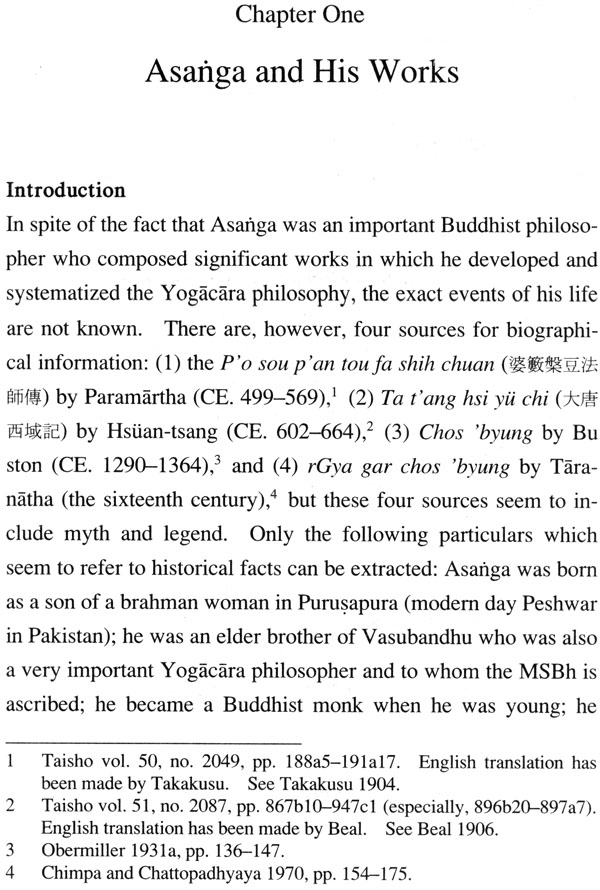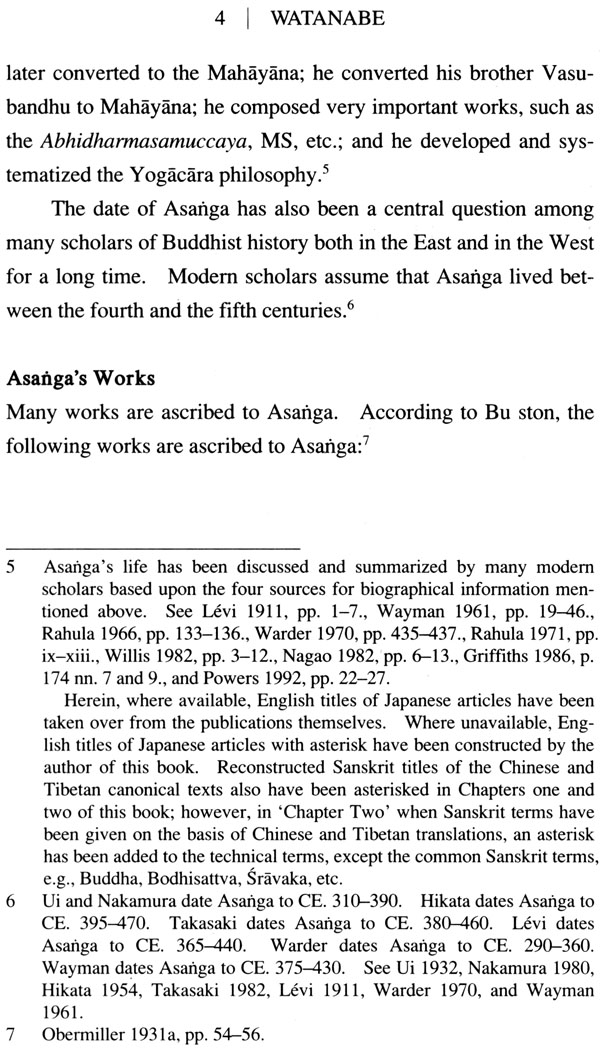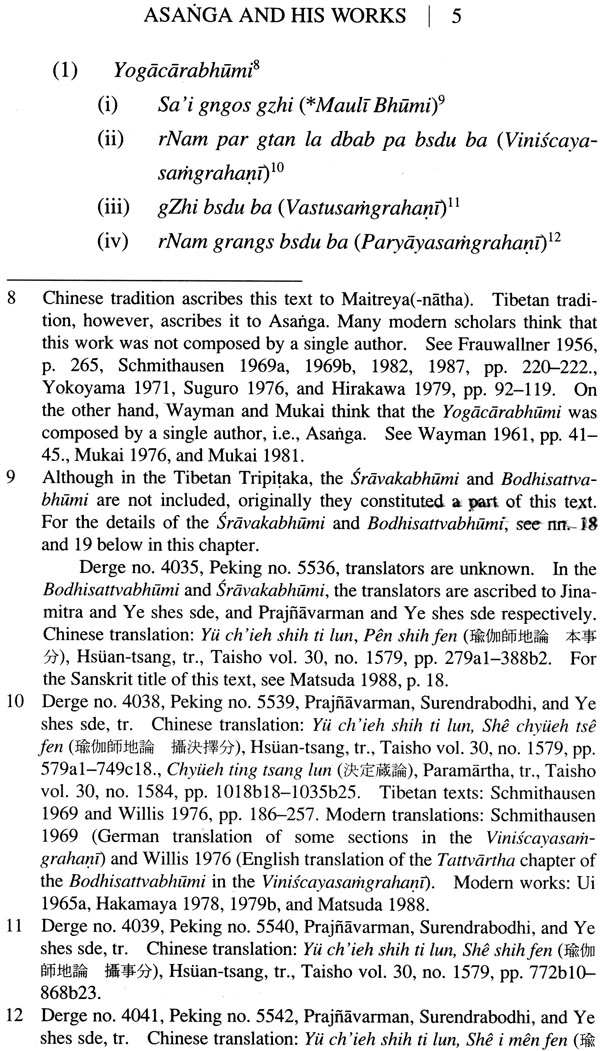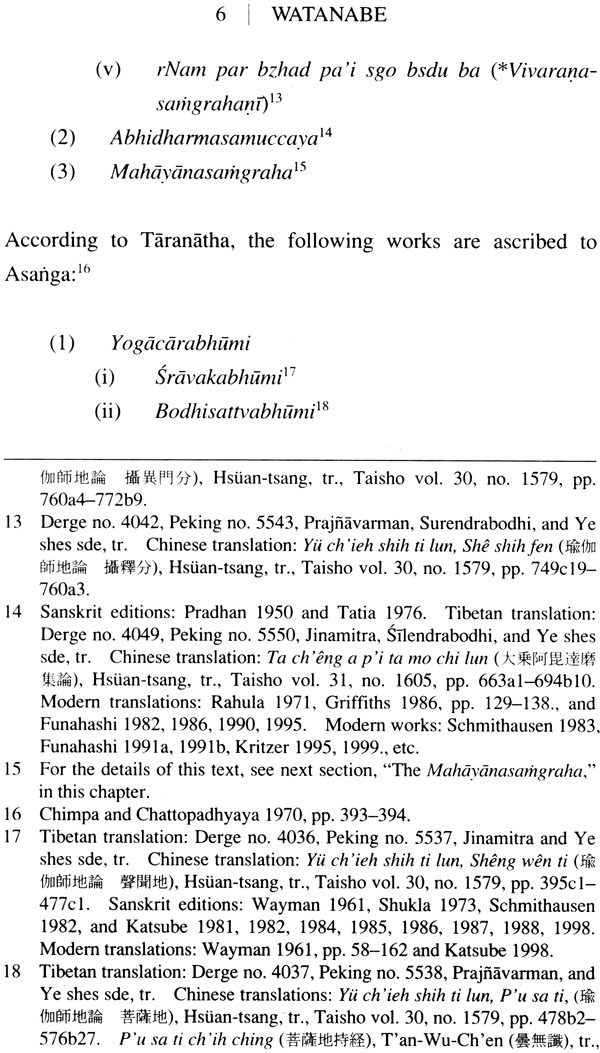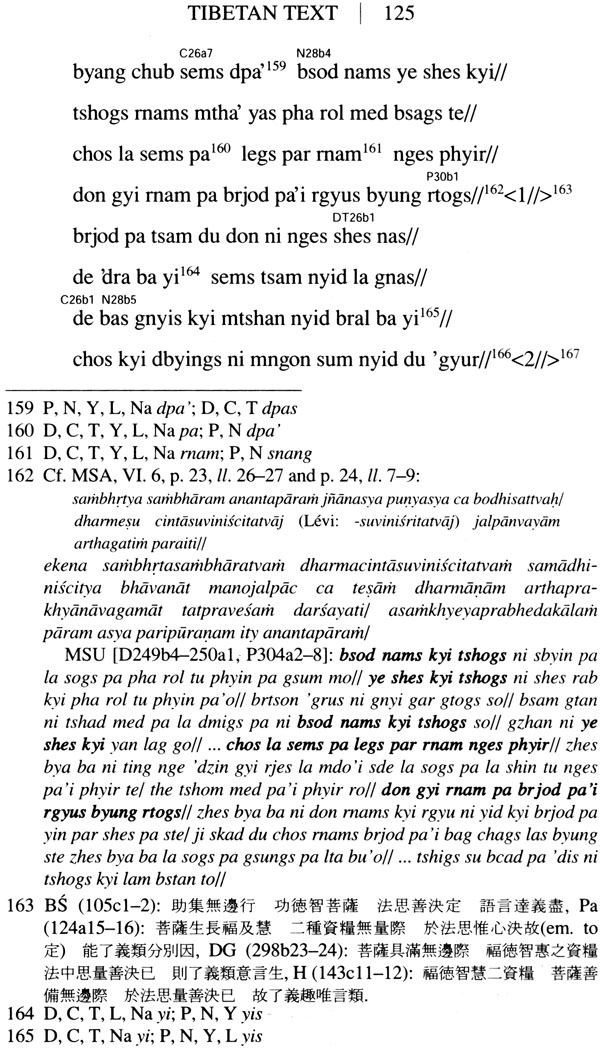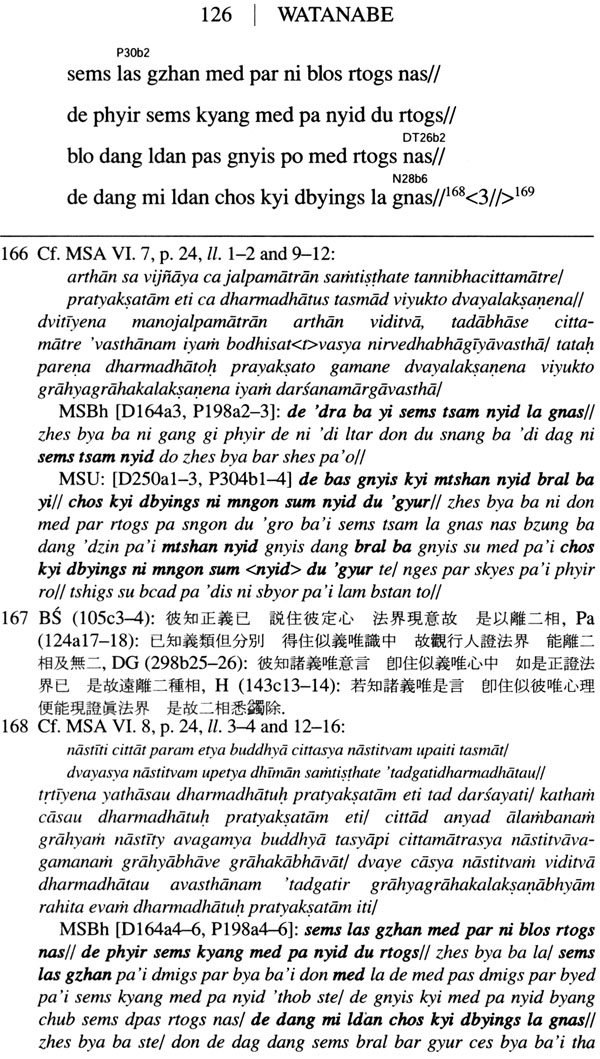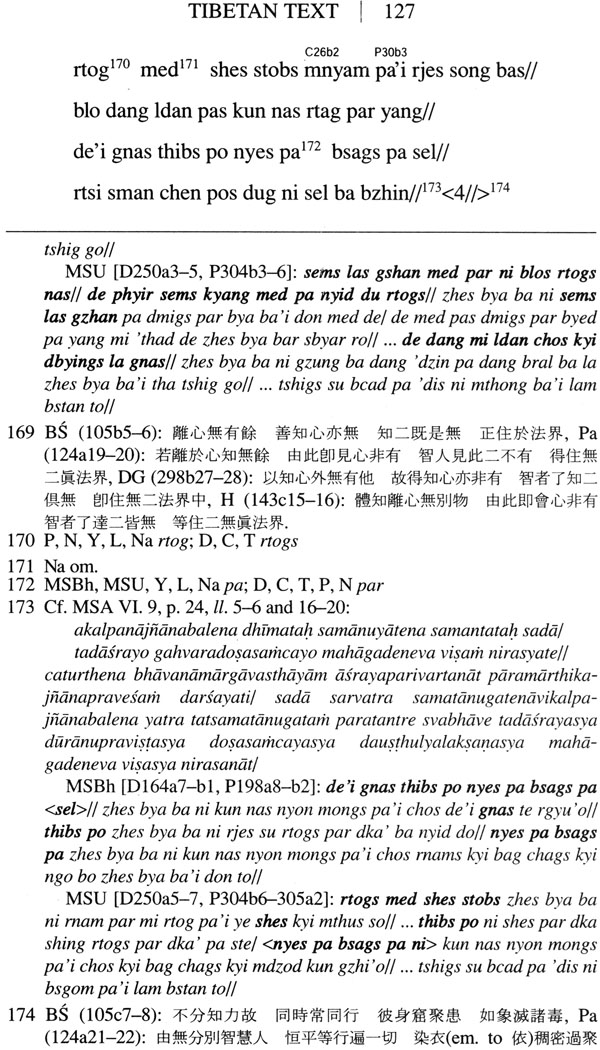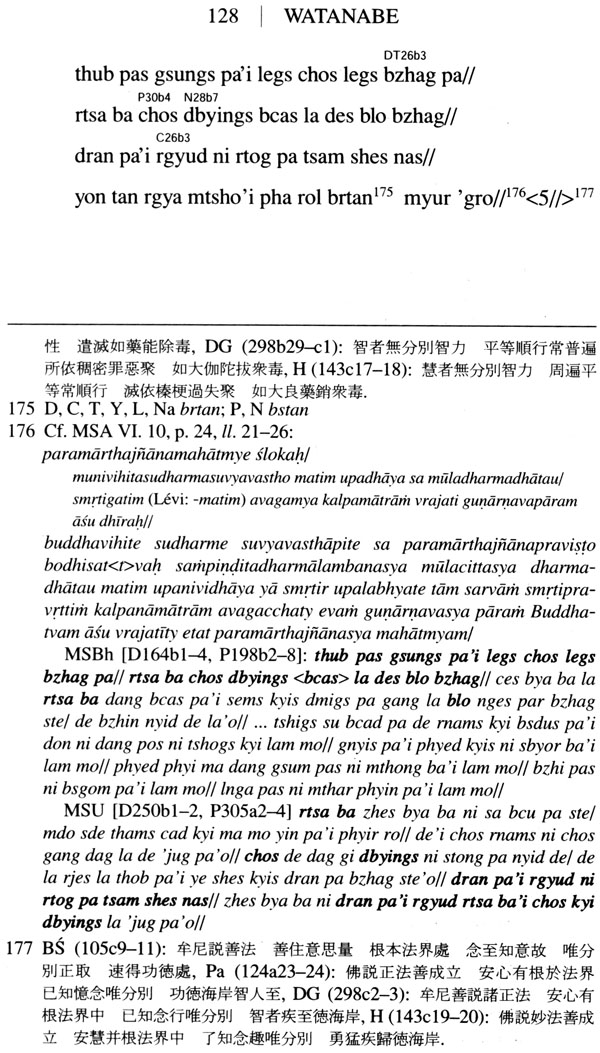
Asanga's Mahayanasamgraha Chapter III (Translation and Tibetan Text)
Book Specification
| Item Code: | NAG321 |
| Author: | Chikafumi Watanabe |
| Publisher: | D. K. Printworld Pvt. Ltd. |
| Language: | English |
| Edition: | 2014 |
| ISBN: | 9788124607190 |
| Pages: | 182 |
| Cover: | Hardcover |
| Other Details | 9.0 Inch X 6.0 Inch |
| Weight | 420 gm |
Book Description
Chikafumi Watanabe received his MA form the University of British Columbia and Ph.D. from the University of Calgary. His primary research interest is Mahayana Buddhism. He teaches religion and related subject at Osaka University. He has edited Samskrta-Sadhuta, Goodness of Sanskrit: Studies in Honour or Professor Ashok Aklujkar (2012).
Mahayanasamgraha is one of the most important texts of the Yogacara School of Mahayana Buddhism. In this text, its author, Asanga, developed and system-atized the Yogacara philosophy and praxis.
This volume presents an English translation of Mahayanasamgraha’s third chapter which discusses the bodhisattva’s entrance onto the defining characteristics of what is to be known, i.e. the realization of vijnapti-matrata. The translation is based on the Tibetan text edition by utilizing and consulting all available Tibetan editions-sDe dge, Co ne, Peking, sNar, thang, Taipei, Lamotte, Yamaguchi and Nagao. This volume also contains English translation and Tibetan texts of the selected passages in the commentaries of the text, i.e. Mahayanasamgraha-bhasya by Vasubandhu and Mahayana-Samgrahopanibandhana by Asvabhava. The translation of the text in this volume aims to advance a scholarly under-standing of praxis, and the relation of the practical and philosophical theories described in the third chapter of Mahayanasamgraha and its commentaries.
The purpose of this book is to present a translation of the third chapter of Asanga’s Mahayanasamgraha. Although a large number of studies have been made on the Mahayanasamgraha, there are very few Western-language translations of the text: La Somme du Grand Vehicle d’Asanga (Mahayanasamgraha) vol. 2 of Etienne Lamotte is a French translation based upon the Tibetan text (vol. 1 is a Tibetan text of the Mahayanasamgraha). The Realm of Awakening of Noriaki Hakamya, Paul Griffiths, and others is a translation of the tenth chapter of the text and its commentaries. “Nirvikalpajnana: Awareness Freed From Discrimination” of Leslies Kawamura is a translation of the ninth chapter of the Tibetan text. The Summary of the Great Vehicle of John Keenan is a translation of Paramartha’s Chinese translation of the text. “A Translation of Mahayanasamgraha III. 1-4,” “A Translation of Mahayanasamgraha III. 5-7,” and “A Translation of Mahayanasamgraha III. 5-7” are my English translation of some portions of the third chapter of the Tibetan text (For the details of modern works on the text, see ‘Chapter One’ of this book, pp. 21-27).
I hope that the translation of the third chapter of the Mahayanasamgraha in the present book will be a significant contribution to the study of Yogacara philosophy in general and of Asanga’s philosophy in particular.
I would like to think the Professor Leslie S. Kawamura of the University of Calgary, who patiently went through the entire translation of the third chapter of the Mahayanasamgraha and its commentaries with me. claryfing countless difficult passages. Without his encouragement and help, translation of the text simply could not have been completed.
I am indebted to Professors Tom J.F. Tillemans of the University of Lausanne and Shoryu Katsura of Ryukoku University, who were the Numata Chair of Buddhist Studies visiting profess-sors at the University of Calgary in 1995 and 1996 respectively. I was influenced much by their lectures on Yogacara epistemology and Madhyamika philosophy, etc. Also, Professor Katsura kindly gave me valuable suggestions in reading and translating the third chapter of the Mahayanasamgraha and its commentaries.
My special thanks are also due to Professor Lambert Schimithausen of the University of Hamburg for his valuable suggestion in reading and understanding some portions of the Mahayanasamgraha and its commentaries, and to Professor Michael Hahn of the Philipps-University of Marburg for his help ful suggestion in reading and understanding a verse quoted in the third chapter of the Mahayanasamgrahonibandhana.
I wish to express my deepest obligations to my guru, Professor Ashoka N. Aklujkar of the University of British Columbia. When I was an M.A. student at the University of British Columbia, I deepend my understanding of Sanskrit language, Indian linguistics, philosophy, and literature via his lactures and guidance.
I am grateful to Professor Karin Preisendanz, now of University of Vienna, who was my supervisor when I was a first year in the master’s programme at the University of British Columbia. I was given much useful information and helpful advice in her classes and in private consultations.
I also would like to acknowledge the generous advice and helpful discussion with Professor Shrikant S. Bahulkar of the University of Pune, who was a visiting professor at the University of British Columbia in 1993, on the Madhyamakahrdayakarika and Tarkjviala.
It was my good fortune to spend a year (December 1997-December 1998) in Pune, India. Professor Mohan G. Dhadphale of the Department of Sanskrit and Pail at the Fergusson College read Sanskrit texts with me and gave me much valuable advice in reading and understanding Sanskrit texts. Professor Saroja Bhate of the Department of Sanskrit and Prakrit at the University of Pune kindly allowed me to attend her lactures on Sanskrit vyakarana.
Study and research in India were made possible through a grant from the Government of India (GOI) through the India Studies Programme of the Shastri Indo-Canadian Institute (SICI). Neither the GOI nor SICI necessarily endorses, however, the views herein expressed.
Thanks are due to Nagoya University Association of Indian and Buddhist Studies, the Zengaku Kenkyukai of Hanazono University, and Nagata Bunshodo for their permission to reproduce my previously published translations of the Mahayanasamgraha.
Finally, I would like to express my gratitude to my mother for her constant encouragement. I believe that my late father, De. Fumimaro Watanabe has been protecting me with blessing of the Triple Gem throughout these years.
| Preface | vii | |
| Abbreviations | xii | |
| Prolegomenon | 1 | |
| Chapter One: | Asanga and his Works | 3 |
| Introduction | 3 | |
| Asangas Works | 4 | |
| The Mahayanasamgraha | 11 | |
| Bibliography of Modern Edition and Translations of | ||
| The MS, MSBh, MSU, and Vivr | 21 | |
| The Contents of Mahayanasamgraha III | 28 | |
| Chapter Two : | Translation of Mahayanasamgraha III | 37 |
| Introduction to the Translation | 37 | |
| Translation | 40 | |
| Chapter Three: | Tibetan Text of Mahayanasamgraha III | 83 |
| Introduction to the Tibetan Text | 83 | |
| Tibetan Text | 86 | |
| Bibliography | 129 | |
| Index | 155 |
